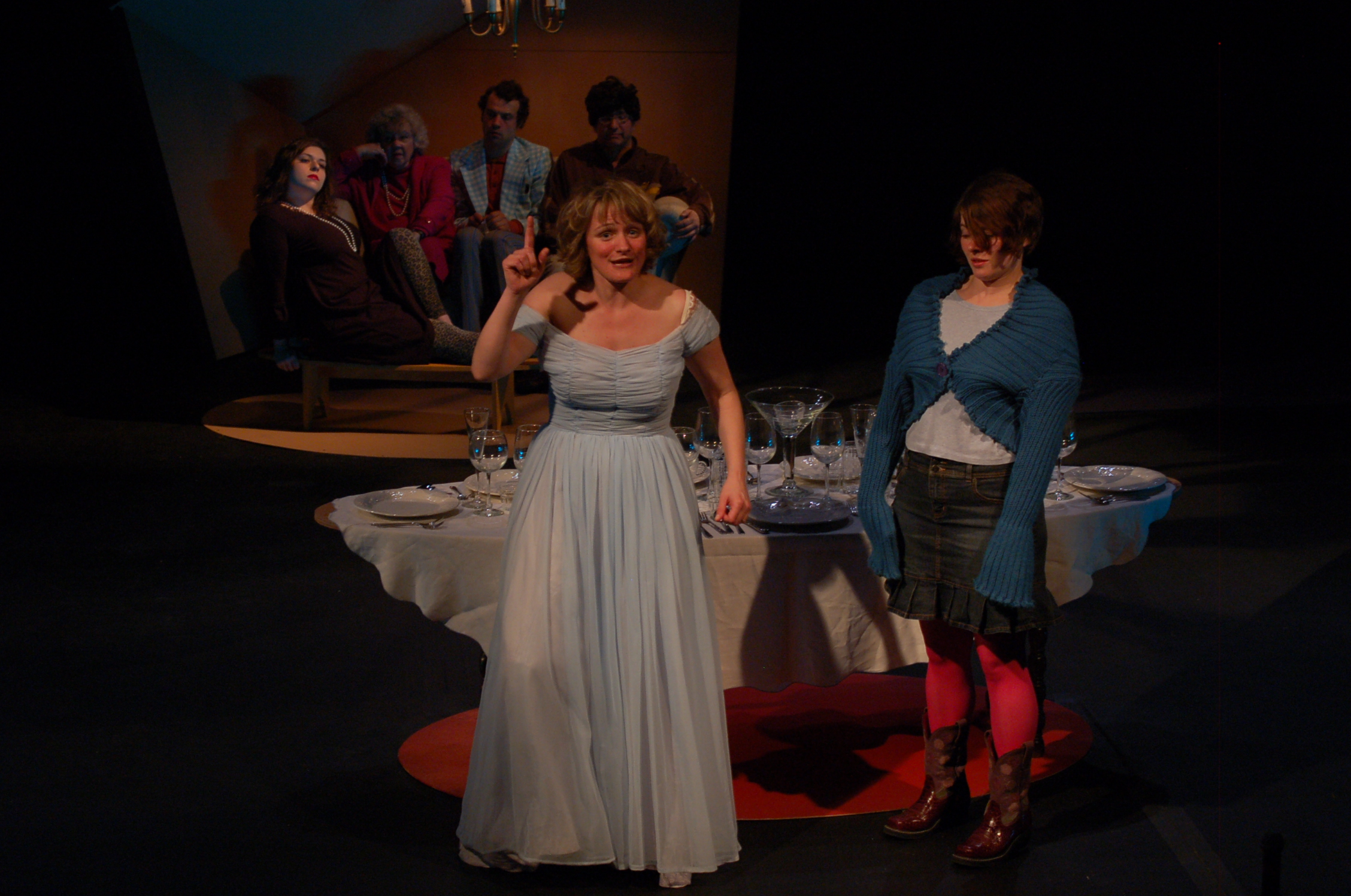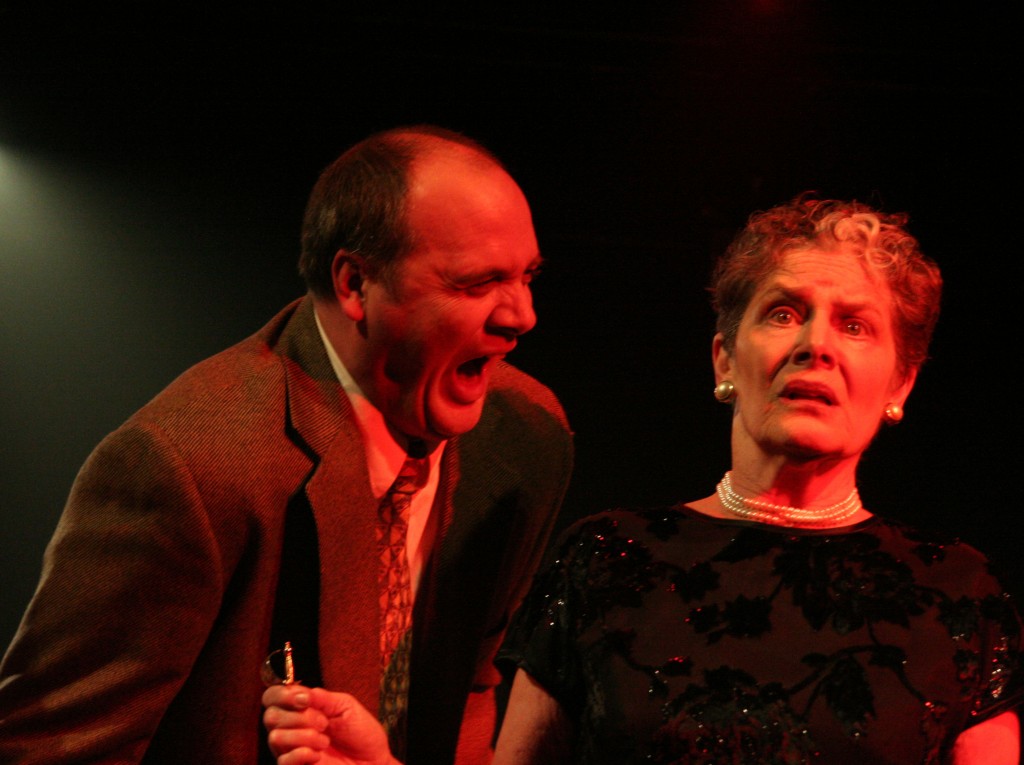
Art Scatter’s indefatigable chief dance correspondent Martha Ullman West, fresh from a sojourn in the Big Apple, hit the ground running on her return to Portland. In a week and a half she took in the Northwest Dance Project’s fall show, White Bird’s presentation of the Hofesh Shechter Company, Jim McGinn and Carla Mann’s “Exquisite Corpse,” and Imago Theatre’s teetering version of Jean-Paul Sartre’s “No Exit.” Herewith her report on her adventures:
**********************************************
In the past 10 days I’ve witnessed four performances, three of them easily classified as dance, the fourth, if we must be Aristotelian about this, as physical theater.
For my New York colleagues this would have been a light schedule. For me it was pretty packed.
Not that I’m complaining — it’s terrific, particularly in these times, that we get to see so much performance in our town. Portland artists are brave and bold, even when the work may not be, and White Bird continues to provide us with dance that ranges from the phenomenal (Baryshnikov and Ana Laguna) to the intriguing (Hofesh Shechter).
Let us begin with the Northwest Dance Project, which I attended opening night at the Newmark, on Friday the 16th. In a pre-curtain speech, executive director Scott Lewis stressed the importance of presenting new work, pointing with considerable pride to a program made up entirely of “world premieres” — a term which, like “world class” and pre-curtain speeches themselves, I wish would get lost in the stratosphere.
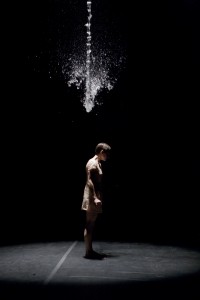 His pride in Dance Project artistic director Sarah Slipper’s new work, Not I, is justified. While I wish I had known when I was watching Andrea Parsons perform this very demanding and emotion-laden solo that the monologue she was dancing to was the uncredited Samuel Beckett’s — and while the video monitor on stage was a bit too reminiscent of Bill T. Jones’s controversial Still/Here, which also dealt with bodies raddled by illness and minds sinking into dementia — Slipper’s jitter-laden, despairing movement has stayed with me. And it’s passed this sure test: I’d like to see it again. Moreover, it was the only piece on this program that had a discernible beginning, middle and end.
His pride in Dance Project artistic director Sarah Slipper’s new work, Not I, is justified. While I wish I had known when I was watching Andrea Parsons perform this very demanding and emotion-laden solo that the monologue she was dancing to was the uncredited Samuel Beckett’s — and while the video monitor on stage was a bit too reminiscent of Bill T. Jones’s controversial Still/Here, which also dealt with bodies raddled by illness and minds sinking into dementia — Slipper’s jitter-laden, despairing movement has stayed with me. And it’s passed this sure test: I’d like to see it again. Moreover, it was the only piece on this program that had a discernible beginning, middle and end.
But new does not necessarily mean good. Nor, necessarily, bad. Except for Not I, the work commissioned for this concert ranged from the mediocre to the ordinary. There were moments in the second part of Edgar Zendejas’s Bu Ba Bee when I began to hope he was going to make use of the energy of the dancers in this young company, and he did create a quite fine solo for Patrick Kilbane. But nobody moved much in the three-part work, and what’s more, I never did figure out what any of them was about, or their relationship to each other.
Continue reading Up, down, all around the town: ‘No Exit’ from the dance →
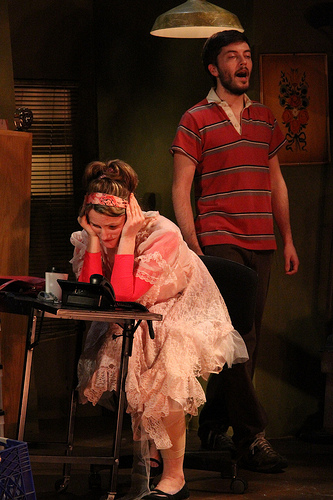 Used to be things were winding down by the time you reached the summer solstice, and there definitely was a time when addicts like me found it impossible to get any kind of movement fix once the Rose Festival was over. Not this year — I actually had to make choices, not having managed the art of being in two or three places at once. So to several emerging choreographers as well as some much more established ones, I apologize for not making it to their performances and herewith offer some thoughts on those I did see.
Used to be things were winding down by the time you reached the summer solstice, and there definitely was a time when addicts like me found it impossible to get any kind of movement fix once the Rose Festival was over. Not this year — I actually had to make choices, not having managed the art of being in two or three places at once. So to several emerging choreographers as well as some much more established ones, I apologize for not making it to their performances and herewith offer some thoughts on those I did see.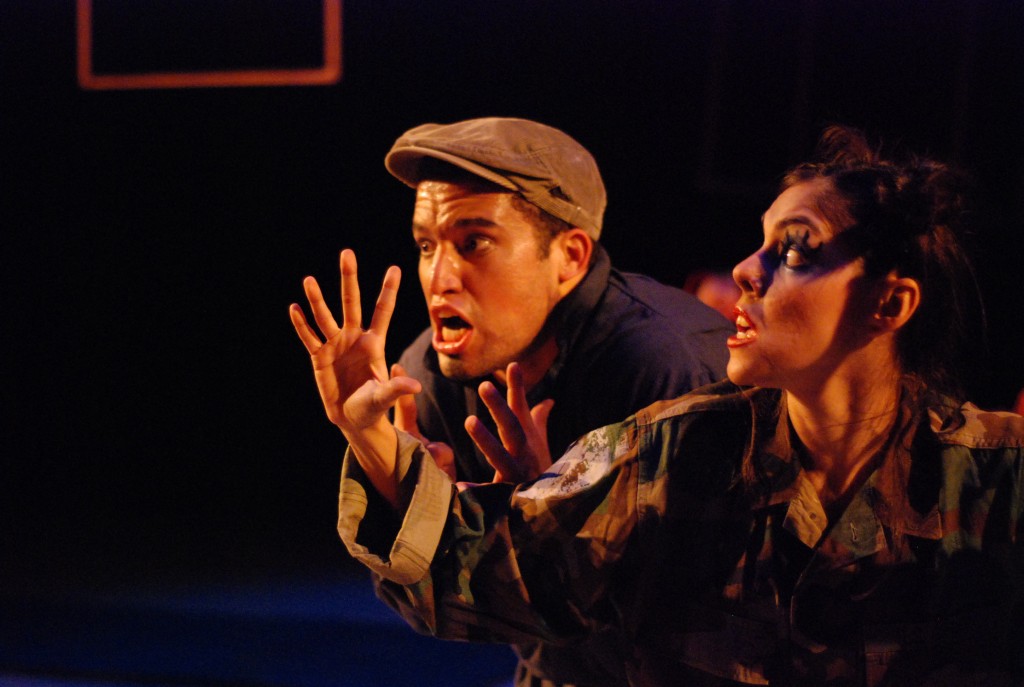
 MELODY FOR THE MEEK. Portland artist
MELODY FOR THE MEEK. Portland artist 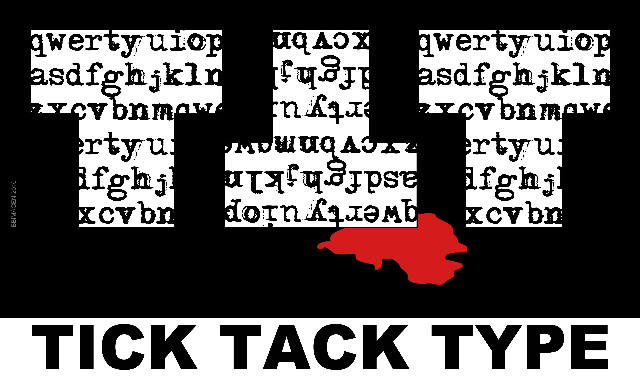

 His pride in Dance Project artistic director Sarah Slipper’s new work, Not I, is justified. While I wish I had known when I was watching Andrea Parsons perform this very demanding and emotion-laden solo that the monologue she was dancing to was the uncredited Samuel Beckett’s — and while the video monitor on stage was a bit too reminiscent of Bill T. Jones’s controversial Still/Here, which also dealt with bodies raddled by illness and minds sinking into dementia — Slipper’s jitter-laden, despairing movement has stayed with me. And it’s passed this sure test: I’d like to see it again. Moreover, it was the only piece on this program that had a discernible beginning, middle and end.
His pride in Dance Project artistic director Sarah Slipper’s new work, Not I, is justified. While I wish I had known when I was watching Andrea Parsons perform this very demanding and emotion-laden solo that the monologue she was dancing to was the uncredited Samuel Beckett’s — and while the video monitor on stage was a bit too reminiscent of Bill T. Jones’s controversial Still/Here, which also dealt with bodies raddled by illness and minds sinking into dementia — Slipper’s jitter-laden, despairing movement has stayed with me. And it’s passed this sure test: I’d like to see it again. Moreover, it was the only piece on this program that had a discernible beginning, middle and end.
